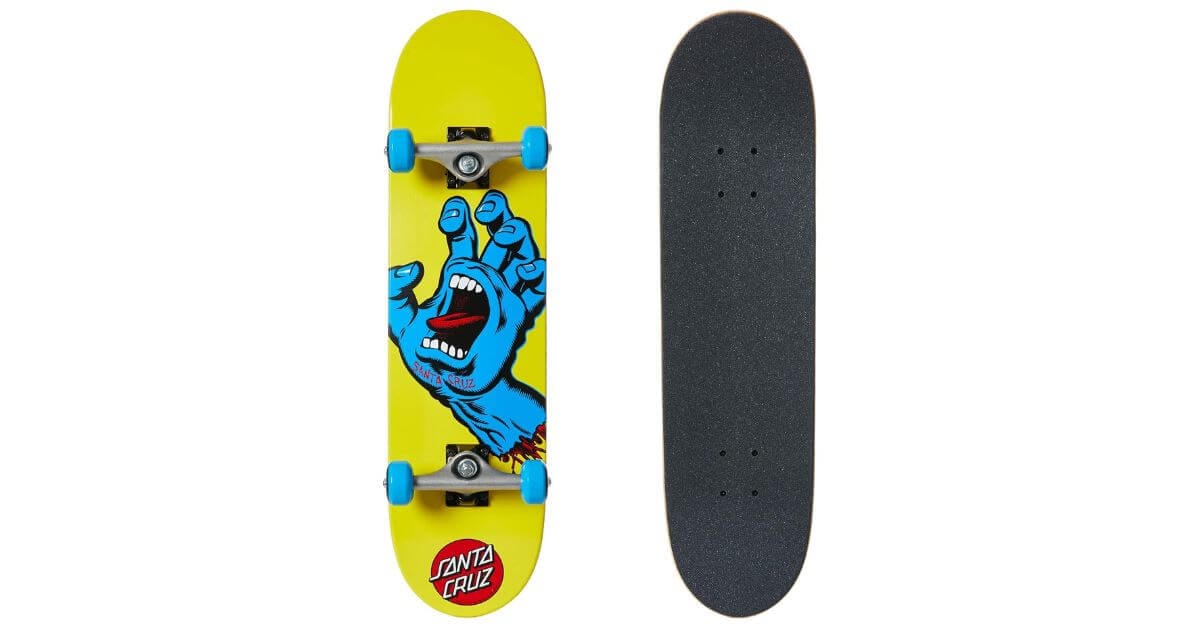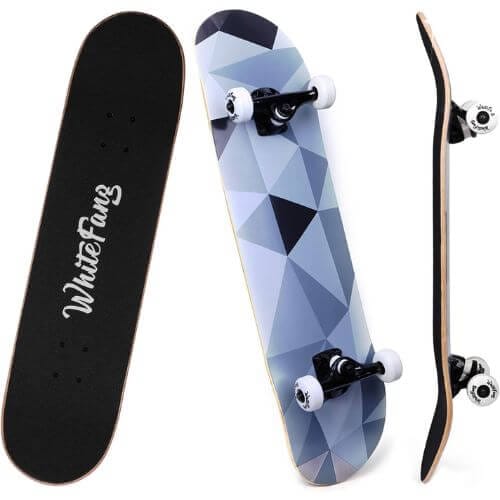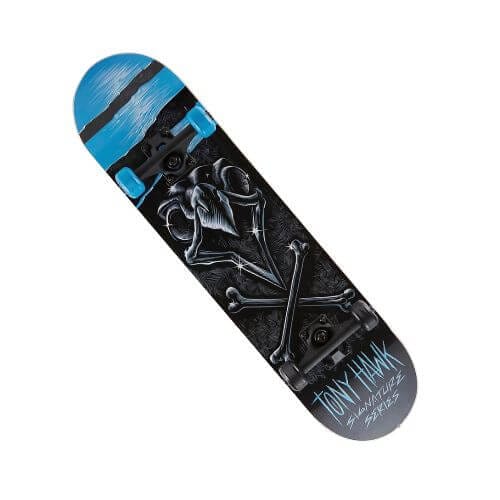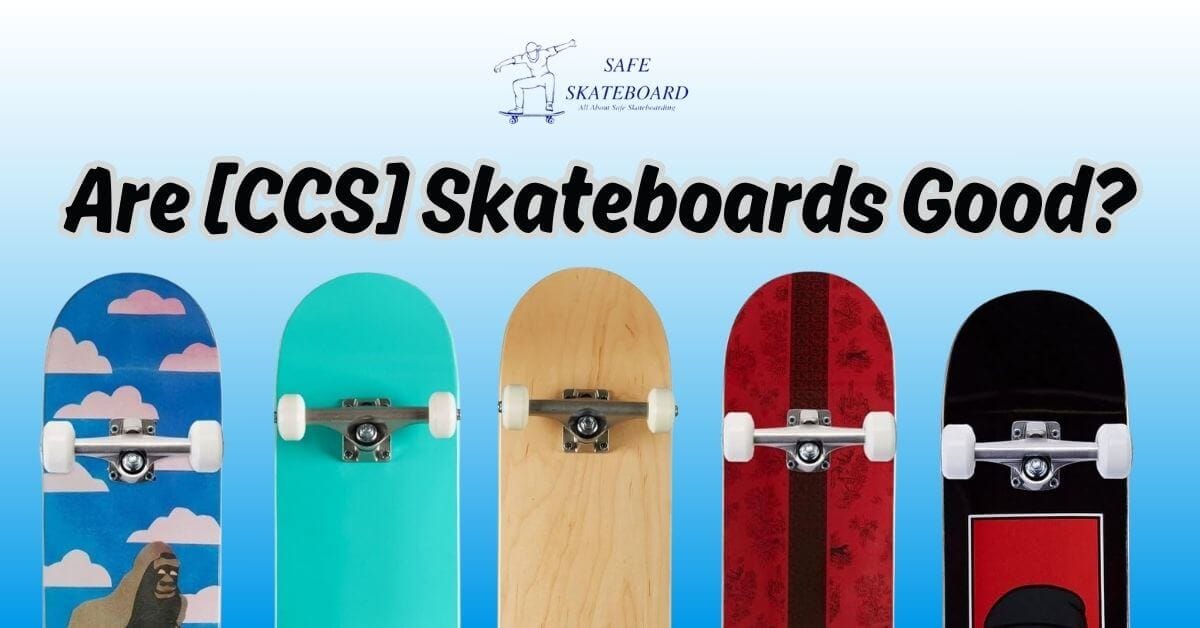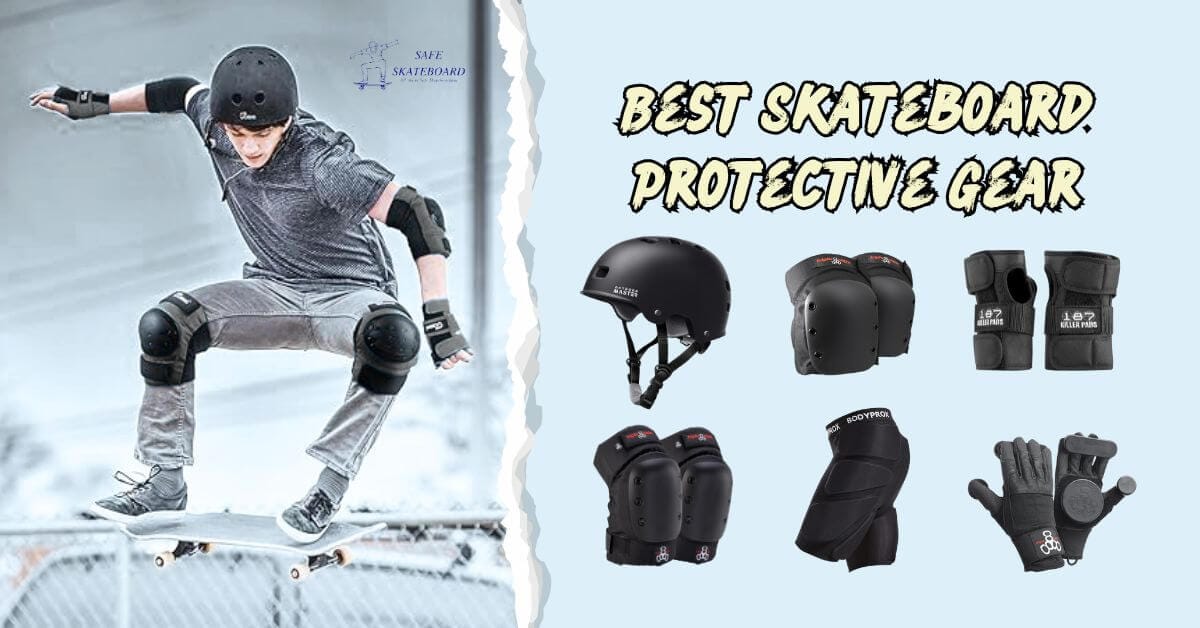The first lesson for every skateboard learner is how to balance on a skateboard. Stand with both feet firmly planted in the middle of the board to balance on a skateboard. Lock your ankles and bend your knees slightly as if you’re about to sit down.
Make sure your body is centered over the board and that it’s level beneath you. When ready, slowly start pushing off with one foot while keeping the other foot firmly planted in place until you reach a comfortable speed.
As soon as you feel confident enough, gradually shift your weight onto whichever foot is forward and let go of the back foot completely. Keep practicing this technique until you can maintain balance for longer periods.
In this article, I will teach you how to balance on a skateboard. Let’s dive into the proper instructions!
Step-by-Step Instructions for Beginners Balancing on a Skateboard
Balancing on a skateboard is the first skill you need to learn before riding. If you can’t balance, you can’t skate. Follow these steps to get started.
1. Find a Safe Place
Start where you won’t fall hard. A flat, smooth surface is best. A driveway, garage, or carpeted floor works well. Avoid rough roads or slopes.
2. Wear the Right Gear
Is skateboarding destroying your knees? Yes, it will! That’s why safety gear is important for skateboarding. Choosing the right gear can prevent injuries and keep you safe while skateboarding. Always wear protective gear and skate within your skill level.

- Helmet: Protects your head from serious injuries in falls or collisions. Ensure a snug and secure fit.
- Knee & Elbow Pads: Prevent scrapes, bruises, and fractures by cushioning your joints.
- Skate Shoes: Designed for grip, support, and durability. Flat soles help you control the board.
- Wrist Guards: Are wrist guards good for skateboarding? Yes, they reduce the risk of sprains and fractures when one falls on one’s hands.
- Clothing: Wear comfortable, loose-fitting clothes that allow free movement. Avoid baggy clothing that may catch on wheels or trucks.
3. How to Stand on a Skateboard?
Standing on a skateboard is an essential skill for any skater. First of all, choose your stance. Find what feels natural. There are two stances:
- Regular: Left foot forward, right foot back.
- Goofy: Right foot forward, left foot back.
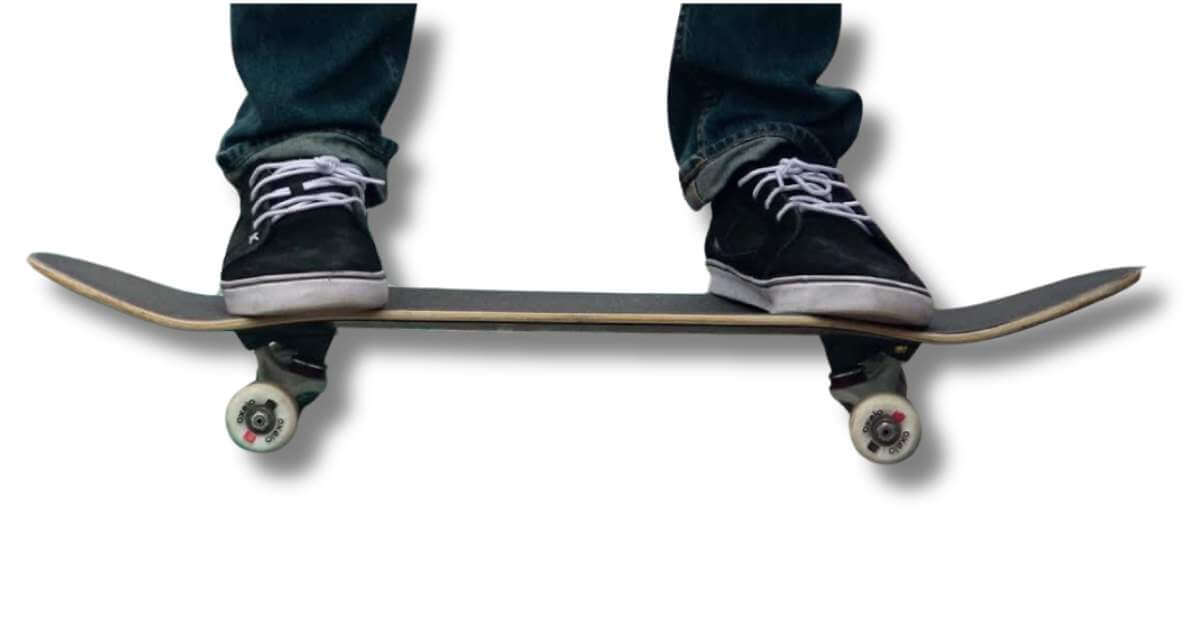
Stand naturally and see which foot feels right in front. Now you know your stance. Let’s move forward!
Practicing and patience are the keys to mastering the art of standing on a skateboard. Start by finding a flat, open surface with plenty of room to move around.
Place your feet shoulder-width apart in the center of the board and push off gently with one foot while keeping your other firmly planted. As you gain momentum, shift your weight onto both feet so that they are evenly distributed across the board’s width.
With enough practice, you will soon confidently stand up on your skateboard!
4. How to Push on a Skateboard?
Pushing on a skateboard is a great way to get around. To do it correctly, place one foot at the back of the board and your other on the ground.
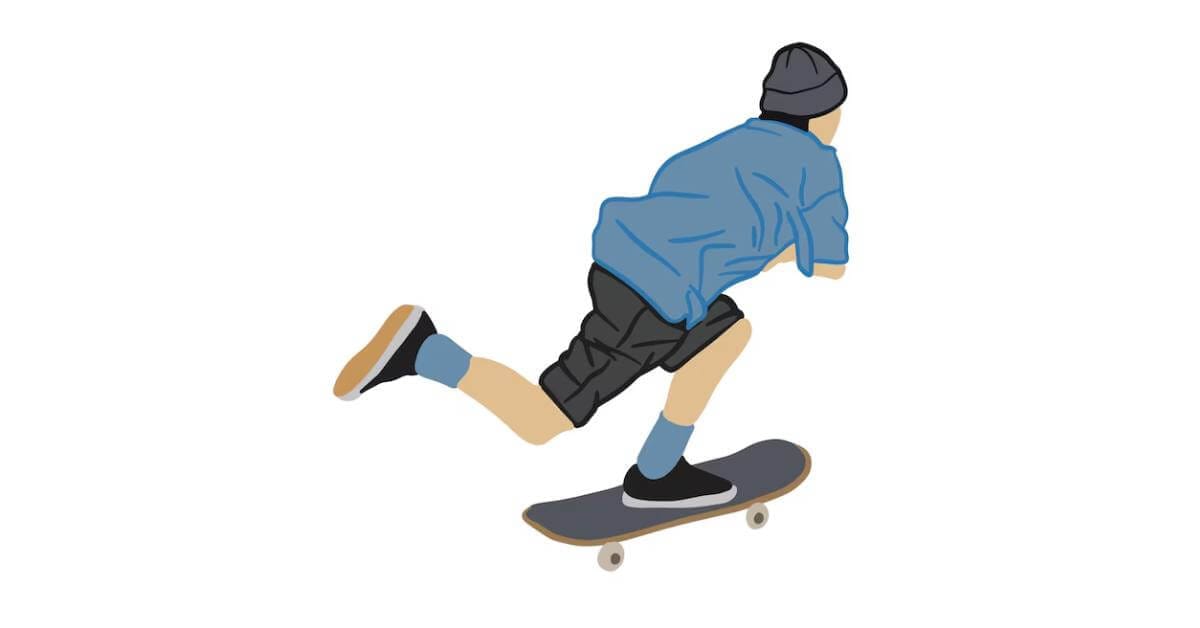
Push off with your foot firmly planted on the ground, propelling yourself forward while keeping both feet steady on their respective surfaces.
Keep your posture upright for optimal balance and control as you push along.
5. Stopping Safely
Know how to stop before you go fast. Step off onto the ground if you’re moving slowly. If rolling faster, drag your back foot lightly on the ground to slow down your skateboard.
6. Keep Practicing
Balance gets easier with time. Start slow and practice daily. The more you stand and roll, the better you’ll get.
Easy Ways To Improve Your Skate Balance.
- Standing on the Skateboard: Before attempting to balance on a skateboard, you must be able to stand comfortably on it.
- Placed Feet Firmly: Make sure your feet are firmly placed in the middle of the board and slightly bent at the knees.
- Adjust Your Weight: Once standing upright, shift your weight onto one foot while lightly shifting your other foot off the board as if you were about to step away.
- Balance Practice Properly: This will help keep you balanced and provide stability as you learn to stay on the board without wobbling or falling over.
- Practice Moving Around: Once comfortable with standing still, practice moving around slowly by shifting your weight between both feet side-by-side and back and forth until you can move around without difficulty or wobbling motions.
- Don’t Give Up: Skateboarding takes practice and persistence. Don’t get discouraged by falls or mistakes; keep trying until you achieve your goals.
- Hold on While It’s Moving: Skateboarding requires constant movement. So, it’s important to hold during skateboarding to maintain balance and control. Also, keep your weight centered and make small adjustments to stay balanced.
- Keeping Control Over Your Toes And Heels: Your toes and heels play a crucial role in maintaining balance on a skateboard. Learn to shift your weight, control your movements using your toes and heels, and practice until it becomes second nature.
- Weight Distribution: Skateboard weight is also a crucial fact to consider. As long as there is an even distribution of weight between both feet, it should be relatively easy to maintain balance while moving along slowly at this stage of learning how to balance on a skateboard.
- Move Faster: The next step would be practicing balancing while gradually increasing speed and skateboarding faster. However, you must maintain balance throughout all stages of movement before finally being able to ride freely with minimal effort required!
How to Balance on a Longboard?
To stay balanced on a longboard, you must know your center of gravity. You should keep your feet shoulder-width apart and bend slightly at the knees for balance.
Be sure to look ahead rather than down at the board, as this will help you anticipate any bumps or turns in the road so that you can shift your weight accordingly.
When turning corners, use an “S” motion with your body and arms to stay centered over the board.
Finally, practice makes perfect; don’t get discouraged if it takes some time before you feel comfortable riding a longboard!
Why is It Hard to Balance on a Skateboard?
Balancing on a skateboard is difficult because it requires an understanding of physics. That’s why most beginners feel that skateboarding is really hard.
So, a skateboarder must use their center of gravity to maintain balance, and this can be hard to do as the board moves side-to-side or up and down with every movement.
Also, riding a skateboard requires coordination between the feet, arms, and body to perform certain tricks, such as turns or jumps. It takes time for most people to master this since different muscles are used for each move.
Finally, maintaining balance on a moving board is more difficult if the surface has unevenness or bumps, which can disrupt your momentum and cause you to lose your balance quickly.
How Long Does It Take to Get Balance on a Skateboard?
It’s one of the most common queries: How long does learning to balance and skateboard take? It typically takes between two to four weeks of regular practice.
In my opinion, an adult beginner skater must practice three times a week for 30 minutes or more each session to get their balance on a skateboard. However, the time frame can vary depending on the individual’s physical strength, coordination, and skill level.
With adequate practice and patience, it’s possible to learn proper balance in as short as one week, but it may take longer if the skater struggles with certain maneuvers.
As a general rule, starting with basic drills such as hopping and pushing off from both feet will help build up confidence, eventually leading to better balance control on the board.
How Do You Skateboard Without Falling?
Practicing proper stance and balance is important to avoid falling off your skateboard. When standing on the board, ensure your feet are spread out evenly, with one foot slightly ahead of the other.
It will help you maintain balance and ensure you do not over-lean or shift too far in either direction.

Additionally, keep a low center of gravity while riding by bending your knees slightly and leaning forward as if pushing against an invisible wall.
Finally, always wear protective gear such as helmets and pads to reduce the risk of injury if you fall off unexpectedly. With enough practice and patience, these techniques should help keep you upright while skateboarding!
Final Verdict
Learning how to balance on a skateboard takes time and practice. It is essential to focus on steady weight distribution and weight-shifting techniques to maintain balance.
Starting with basic movements and gradually progressing to more advanced tricks can help you build the skills needed to become a skilled skateboarder.
Generally, it can take a few weeks to a few months of regular practice to develop the muscle memory and balance skills needed to stay on a skateboard without wobbling or falling off.
The most important part of learning how to balance on a skateboard is to practice. With enough patience and dedication, mastering this skill can be achieved.
It takes time and effort, but the feeling of riding on a skateboard with a perfect balance is worth it in the end!
With these helpful tips, anyone can learn how to balance on a skateboard.



